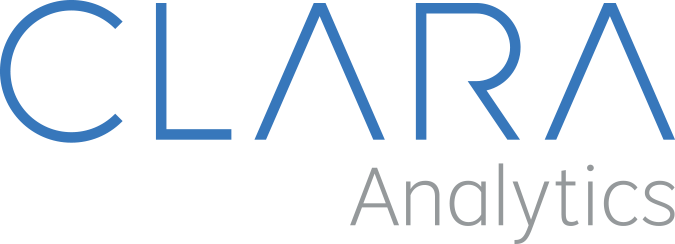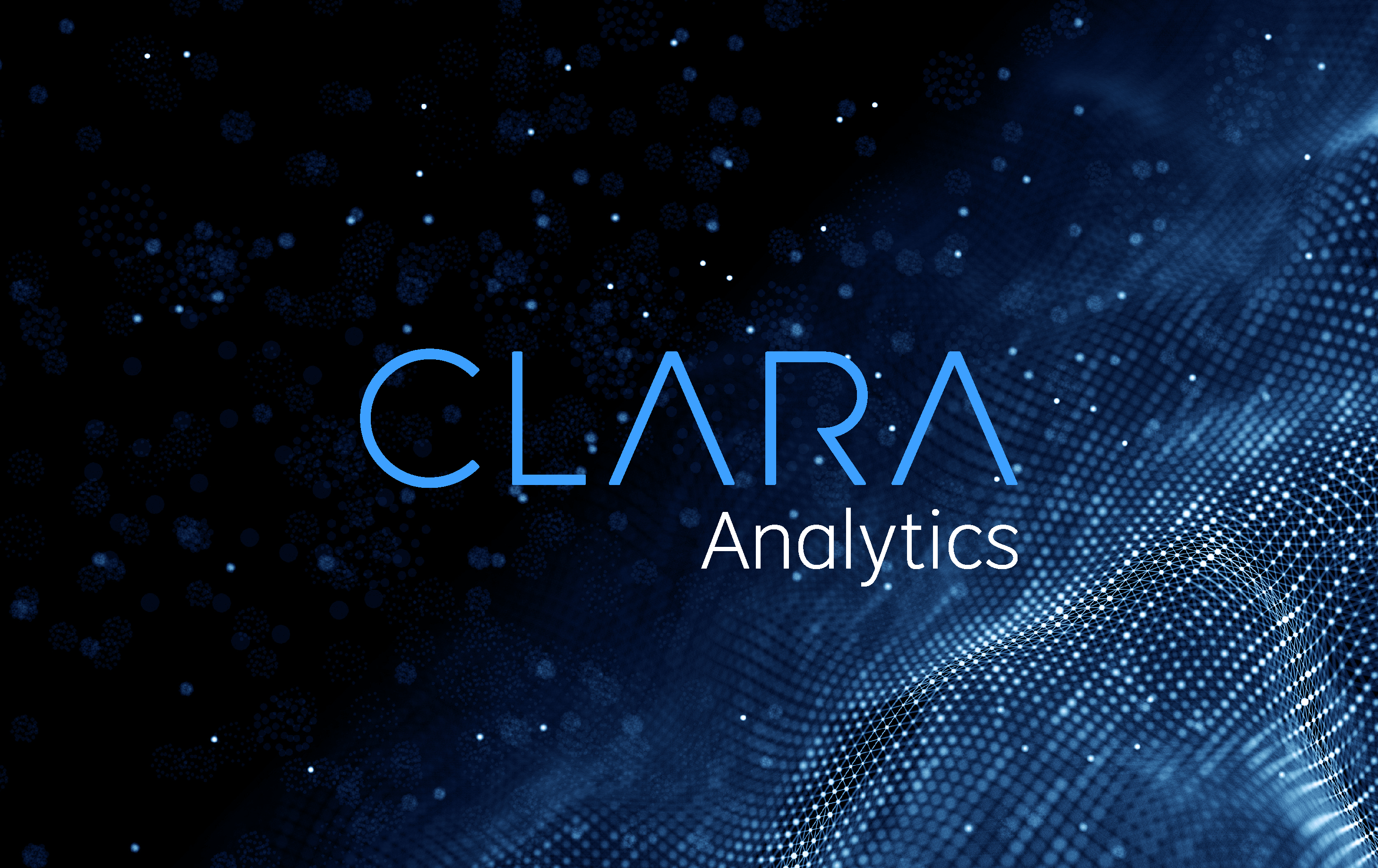Meet The Disruptors – Gary Hagmueller of CLARA Analytics On The Three Things You Need To Shake Up Your Industry
As first published in Authority Magazine.
By Tyler Gallagher
As a part of our series about business leaders who are shaking things up in their industry, I had the pleasure of interviewing Gary Hagmueller.
Gary Hagmueller, chief executive officer of CLARA Analytics, has been a leader in the technology industry for more than 20 years, with a deep focus on building artificial intelligence and machine learning applications for the enterprise market. Over the span of his career, he has raised more than $1.2 billion in debt and equity and helped create over $7 billion in enterprise value through two IPOs and four M&A exits. Gary holds an MBA from the Marshall School of Business at the University of Southern California, where he was named Sheth Fellow at the Center for Communications Management, as well as a bachelor’s degree in Business Administration from Arizona State University.
Thank you so much for doing this with us! Before we dig in, our readers would like to get to know you a bit more. Can you tell us about your “backstory”? What led you to this particular career path?
An old boss of mine made the observation that I became a “geek” late in life (I was 24), but he was correct in that I volunteered for every hairy technical project I could get my hands on and relished highly analytical tasks.
I also like to problem solve and am a bit of an adrenaline junky, so a fast pace — coupled with a little risk — has a strong appeal. These epiphanies led me to pursue a graduate degree that would make me more marketable in the tech industry.
Even before I started my MBA program, I targeted all my efforts on cracking into the industry by attending countless events where I could meet and network with as many tech leaders as possible. I wanted to soak up everything I could learn.
Then once I got my first tech job, I was hooked. In the 25 years since, I’ve spent nearly all my time focused on software and advanced analytics. I’ve found that this industry has been the perfect complement to the personality traits I noted above. And when you do something that is well-aligned with who you are, it doesn’t seem like work at all.
Can you tell our readers what it is about the work you’re doing that’s disruptive?
The work we’re doing at CLARA is highly disruptive from the standpoint that we’re taking very advanced artificial intelligence technology and applying it to a segment of the insurance industry that has never really leveraged the full potential of its data. Before CLARA, most of the ways that work had been done in the claims space was the product of passed down industry knowledge. And I’ve found that any time you push up against a space where people are saying, “This is how we’ve always done it,” there is a real opportunity to transform.
In the claims space today, data systems and the ability to pull information out of those repositories are becoming much more mature. As such, we’ve arrived at the point where CLARA’s technology can fundamentally transform how people perform their jobs. We can help claims representatives be better, faster, smarter — essentially, we can give people superpowers through AI to do things in ways they never dreamed possible.
For example, our technology can look at the words or phrases people use when communicating with their doctors, insurance companies, or others and detect nuances that indicate frustration, annoyance, agitation, or other emotions that could lead to a poor claim outcome. Certain words or combinations of words carry a weight so subtle that humans may not recognize them as problematic. This enables issues to be addressed in a far more effective, time-sensitive manner, saving a lot of time, money, and headaches. Sentiment analysis is just a tiny sliver of what AI can do in commercial insurance today.
Can you share a story about the funniest mistake you made when you were first starting? Can you tell us what lesson you learned from that?
Oh, so many stories, it’s hard to land on one. I will say that I tend to operate in “go” mode most of the time, so early in my career, I had a tendency not to pay the most careful attention to my invites. I would perhaps show up at the wrong location for a meeting because I had another spot in my head, or there was the time I showed up to a dinner wearing a tuxedo when the attire was business casual.
While these moments caused some stress and embarrassment when they happened, they led me to understand that attention to detail matters. Showing up in the right place at the right time in the proper attire is a sign of respect for the people you are meeting with. I pay far more attention to the little things today as a result, and I am proud to say that my attire is now generally on point.
We all need a little help along the journey. Who have been some of your mentors? Can you share a story about how they made an impact?
I’ve been very fortunate to work with many great CEOs and executive partners throughout my career. Singling out any one of them feels like belittling the impact others have had on my career, and I wouldn’t be where I am today without their collective investment in me.
Many of my mentors have influenced how I think through my approach to marketing and selling enterprise software. My mentors have been instrumental in terms of demonstrating how to operationalize things. Perhaps most importantly, I had a few mentors who really helped me hone my EQ skills, which I think are critical to building a strong and vibrant culture.
Software is ever-changing, ever-evolving, and what’s current today will be out of date before you know it. My mentors have helped me recognize what language works for today, what will be important a month from now, and what we can grow into over time.
In today’s parlance, being disruptive is usually a positive adjective. But is disrupting always good? When do we say the converse, that a system or structure has “withstood the test of time”? Can you articulate to our readers when disrupting an industry is positive and when disrupting an industry is “not so positive”? Can you share some examples of what you mean?
Everything eventually winds up being disrupted, even if only in small measure over several years. However, disruption isn’t always comfortable until you get to the other side.
I’ll give you an example from my past company. There used to be a big problem with false positives in the banking sector — transactions that were flagged as suspicious that shouldn’t have been. False positives required investigation, which meant banks hired thousands of people to go through a very manual, time-consuming process checking on things unnecessarily. It was grunt work that talented investigators hated.
The company I worked for at the time had developed technology that dramatically reduced false positives. With our software, banks didn’t need the same investigator headcount, which worried employees. Were they going to lose their jobs? Mass layoffs would have been a real negative in this case. But instead, the investigators’ focus was allowed to shift to more important, meaningful, and interesting cases that required them to think more deeply. In that case, AI freed them up to make a positive impact and changed people’s lives by improving the scope of their jobs. CLARA is accomplishing a similar feat in the insurance industry today.
Can you share three of the best words of advice you’ve gotten along your journey? Please give a story or example for each.
Embrace transparency in management: This is incredibly important. If people understand your motives for what you’re doing and why, they are far more inclined to help you/the company succeed. They may not agree 100% with every decision, but understanding the thinking behind choices and direction makes it easier to grasp the big picture.
Fail fast: The competitive landscape is rapidly changing. You’ve got to jump in and try to develop new products, features, or services and get them in front of people. Innovation won’t be perfect, but you’ve got to have a process by which you figure out if an idea works. If it doesn’t, don’t waste time going further down the path. And certainly, don’t try to “get it right” before getting feedback! If something doesn’t work, move on to another idea that might have a better shot at success.
Creative destruction is a good thing: You should never rest on your laurels. Just because you have something that works well now doesn’t mean that it’s as good as it can be, and it will most likely age poorly. You should never be satisfied that what you have today is a long-term solution in final form. You always need to be seeking ways to improve it. Sometimes that involves junking what works in favor of something totally new, even if you face resistance to change. People are naturally inclined to like things that they understand and know how to use. The problem is if you don’t innovate or you become too afraid to make changes, your technology won’t progress and evolve; there is a risk that your work becomes irrelevant.
Lead generation is one of the most important aspects of any business. Can you share some of the strategies you use to generate good, qualified leads?
Every industry is different. What works in one sector won’t necessarily work in another. It’s highly dependent on what you’re selling.
For CLARA, lead generation involves activities that fall into three buckets. First, it is vital that we identify and network with key buyers. Generally, our solution is purchased by people who are reasonably high up in an organization, those that have the purview to understand what is happening across multiple teams and where their issues lie. We are looking to connect with those people and build authentic relationships with them.
Next, we have to make sure our value proposition and how our technology works are understood broadly, more broadly than just with the buyers. This is important because for a product to be successful, people have to want to use it. They need to know what the technology does, why it’s the right solution for their problems, how it adds value, and how it makes their jobs easier. CLARA sets about doing this through state-of-the-art content marketing — well-crafted white papers, conference presentations, and webinars.
And finally, all of our messages are very clearly pinned toward the value our technology can generate. The good news for us is that companies that adopt our technology see quite a bit of benefit in a relatively short time.
We are sure you aren’t done. How are you going to shake things up next?
We’re just at the starting point actually. CLARA initially focused on workers’ compensation because there are several complex problems to which advanced machine learning could be applied. As we solve all of these problems, we can see similar opportunities in a whole host of other insurance lines.
We are beginning our ramp into various other relevant commercial insurance lines, such as commercial auto, and we’ll add new products as warranted that leverage our core technology. We intend to address the entire claims operation value chain from the moment a claim is filed to the moment it’s closed, hitting all the different issues that pop up along the way. We want to add value to customers by addressing individual pain points within that process.
You are a person of great influence. If you could inspire a movement that would bring the most amount of good to the most amount of people, what would that be? You never know what your idea can trigger. 🙂
For me, it would be teaching people how to foster healthy machine-human interactions. I think people tend to over-rotate in one direction or the other as though AI is going to ruin or save us all.
AI doesn’t have to be scary. Suppose we are thoughtful about how we integrate advanced analytical technologies into our lives and how we weave them into the ways we currently do things. In that case, there is a very solid opportunity for AI to be a game-changer in many regards. It can truly enhance and increase people’s enjoyment of their jobs and their lives.
For example, take a technology like Siri. Siri is largely an online assistant rooted in AI. Today, it’s pretty simplistic, but it helps figure out a wide variety of things that could be useful to enrich your life. The same sort of dynamic can exist in the workplace and in all of the different processes we wind up doing.
As a movement, how do we get people to think more about incorporating these technologies into work and life? In some instances, it can also require asking how we can unleash people to do the aspects of their job that initially attracted them to the field. In so many vocations, the things people love to do get commingled with stuff they don’t like but have to complete. With AI, how can we figure out how to help the machine smooth out those aspects that don’t make sense or that stop people from enjoying their work? When the horrible, rote stuff is removed and people are passionate and energized by what they do, all kinds of positive innovation is possible.
How can our readers follow you online?
Gary Hagmueller on LinkedIn: www.linkedin.com/in/garyhagmueller/
Gary Hagmueller on Twitter: @GHagmueller
CLARA Analytics: https://claraanalytics.com/
CLARA Analytics on LinkedIn: www.linkedin.com/company/clara-analytics
CLARA Analytics on Twitter: @claraanalytics
CLARA Analytics on Facebook: www.facebook.com/claraanalytics/
This was very inspiring. Thank you so much for joining us!



